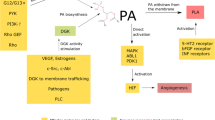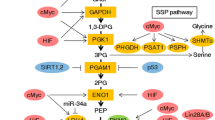Abstract
Aberrant differentiation is a frequent hallmark of tumors, suggesting that modulators for differentiation and proliferation play a role in multistage carcinogenesis and that their use can also be exploited in cancer chemoprevention and therapy. We have demonstrated that selenium (Se) may be a modulator for the differentiation and proliferation of tumor cells. Evidence has been obtained that Se exerts the following effects: reversing changes of biochemical phenotypes toward normal levels, including reduction of cGMP level and cAMP-dependent protein kinase isozyme type I; increase in cAMP level and cAMP-dependent protein kinase isozyme type II, and altering membrane properties. Furthermore, we have obtained support for this hypothesis utilizing experiments on cultured human liver cell lines. It is demonstrated that Se can lead to the following changes: a. reduction of mitotic index; b. increase in the adhesiveness of cells; c. decrease in confluent saturation density and induction of an early contact inhibition; and d. decrease in tumorigenicity. For the purpose of comparison, the effects of Se on the normal counterparts was also studied. Contrary to what was observed above, there was no significant change in both biochemical and cellular aspects of normal cells treated analogously.
Similar content being viewed by others
References
K. C. Lin and S. T. Lei,Biochem. Biophys. Acta no. 6,32, (1981) (in Chinese).
E. Ou, inTissue Culture Techniques, E. Ou, ed., Health Press, Beijing, China, 1982, p. 100 (in Chinese).
P. L. Pederson,Meth. Cell Biol. 20, 441 (1978).
E. Bustamante,J. Biol. Chem. 256, 8699 (1981).
M. Fehlman et al.,J. Biol. Chem. 256, 7449 (1981).
A. G. Gilman,Proc. Natl. Acad. Sci. USA 67, 305 (1970).
J. S. Liu,Chin. J. Pharmacol. 2 67 (1981) (in Chinese).
Q. Liu, S. Huang, H. Chen and S. Y. Yu,Chin. J. Oncol. 8, 339 (1986) (in Chinese).
M. Inbar,Europ. J. Cancer,13, 1231 (1977).
P. Ao, M. Zhao, and S. Y. Yu,Biol. Trace Elem. Res. vol. 12, no. 1-2 (1987).
P. Ao, M. Zhao, and S. Y. Yu,Biol. Trace Elem. Res. vol. 12, no. 1-2 (1987).
N. G. Goldberg,Adv. Cyclic Nucleotide Res. 5, 307 (1975).
Y. S. Cho-Chung,Adv. Cyclic Nucleotide Res. 12, 111 (1980).
M. Shinitzky,Biochem. Biophys. Acta 738, 251 (1984).
De. Laot,Biochem. Biophys. Acta 509, 188 (1978).
S. C. Liu,Adv. Biochem. Biophys. 15, 36 (1983) (in Chinese).
B. L. Chao,Adv. Biochem. Biophys. 16, 43 (1984) (in Chinese).
J. S. Bertram,Can. Surveys 2, 254 (1983).
J. C. Barrett, T. W. Hesterberg, and D. G. Thomassen,Pharmacol. Rev. 36, 2013 (1984).
P. Ao and Q. Q. Pan,Can. Res. Prevent Treat. 10, 19 (1983) (in Chinese).
P. Ao and M. Zhao, and S. Y. Yu,Biol. Trace Elem. Res. vol. 12, no. 1-2 (1987).
Author information
Authors and Affiliations
Rights and permissions
About this article
Cite this article
Yu, S.Y., Ao, P., Wang, L.M. et al. Biochemical and cellular aspects of the anticancer activity of selenium. Biol Trace Elem Res 15, 243–255 (1988). https://doi.org/10.1007/BF02990141
Received:
Accepted:
Issue Date:
DOI: https://doi.org/10.1007/BF02990141




